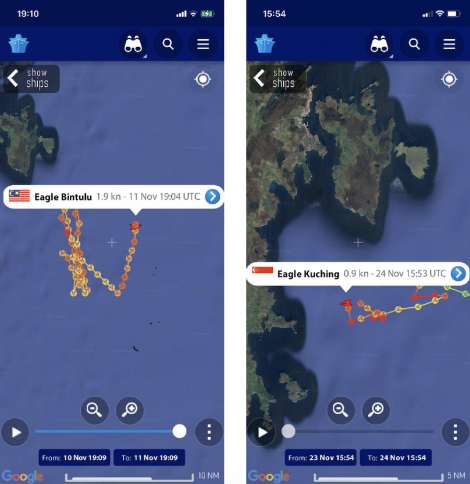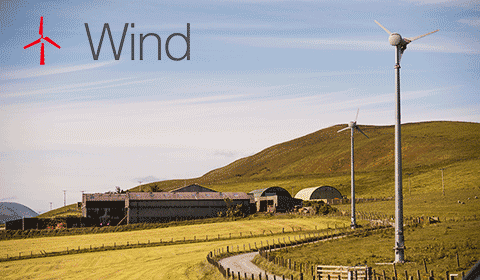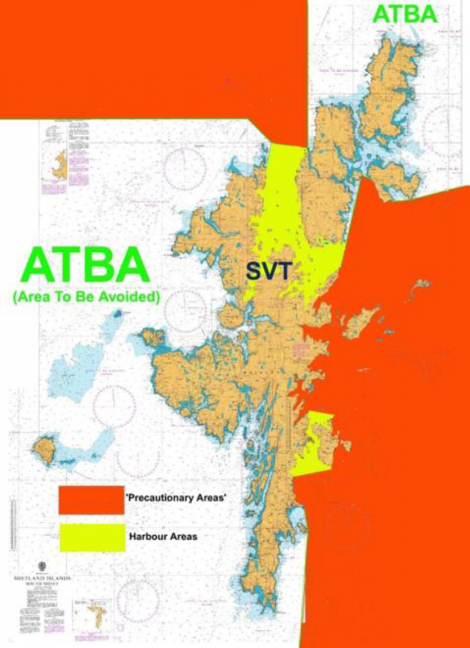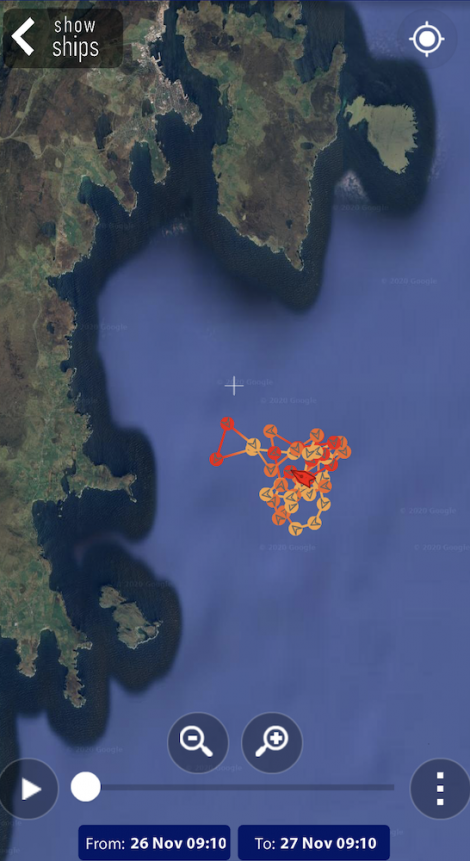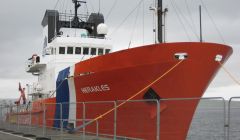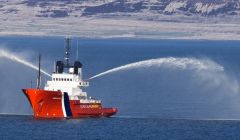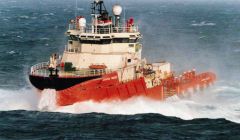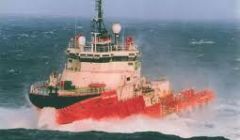Features / Let’s keep loaded tankers further offshore
Fully-laden oil tankers from the Sullom Voe oil terminal in Shetland have been loitering near two internationally famous island nature reserves while they wait to be told where to take their cargo, writes former SIC councillor and honorary warden of Noss nature reserve Jonathan Wills.
THE Malaysian-registered tanker Eagle Bintulu (62,150grt) left Sullom Voe on 14 September with 600,000 barrels of oil in her tanks and then drifted for two whole months inside an environmentally sensitive ‘Precautionary Area’ before sailing on to Scapa Flow in Orkney on 14 November.
The vessel is on long-term charter to Shell and owned by AET Labuan One Pte Ltd (https://www.aet-tankers.com/).
Another AET-managed ship, the Singapore-registered Eagle Kuching (60,379grt), left Sullom Voe with a similar-sized cargo on the evening of 23 November. Today, (27 November) Eagle Kuching is still ‘waiting for orders’ in the approaches to Lerwick Harbour, between the Isle of Noss National Nature Reserve and the RSPB reserve on the island of Mousa.
Both ships entered and stayed inside a ‘Precautionary Area’ where mariners are advised that they are likely to meet “large, deep-draught vessels of limited manoeuvrability”.
The Precautionary Areas were designed to allow large ships to approach the tanker port of Sullom Voe and the Lerwick cruise ship anchorage in Bressay Sound.
As the enclosed chart shows, the Precautionary Areas on the north-western and south-eastern coasts of Shetland are different from the ‘Areas to Be Avoided’ (ATBAs) covering the remainder of our coastline, where vessels of more than 5,000 gross registered tonnes carrying oil or other hazardous cargoes in bulk should stay at least 20 miles offshore.
The notes to the official charts, approved by the International Maritime Organisation (IMO) say the ATBAs are there “in order to avoid the risk of oil pollution and severe damage to the environment of Shetland”.
Exactly how this risk might become less severe when a ship crosses the line between an ATBA and a Precautionary Area is not explained on the charts, nor by the Maritime and Coastguard Agency (MCA) or the IMO.
Become a member of Shetland News
According to Shetland Islands Council, port authority for Sullom Voe, the Precautionary Areas are “advisory only” and the one where the Eagle Bintulu spent two months as a floating oil storage facility is “far less explicit” than the others and “exists only for the purpose of ship’s routeing”.
But the ship could not have been ‘routed’ to Lerwick, as she didn’t enter Lerwick port limits at any time in the two months she spent just outside them and in any case Lerwick is not a crude oil discharge port. If you are confused by this, so am I and so, it appears, is the council’s harbour board.
The words in quotation marks above are from a somewhat condescending reply the harbour board sent me when I asked last week if they intended to ban the ship from the port of Sullom Voe for breaching regulations agreed between the council and the oil industry in 1979.
According to the harbour board, “the Eagle Bintulu has not been found to have breached any regulation” but both the council and the terminal owners “will continue to monitor the activities of all vessels calling at Sullom Voe Terminal and uphold the high standards we have maintained throughout”.
It seems to me that the harbour board is misinterpreting its own regulations, for this is what it actually says in paragraph 3:2 of the Vessel Traffic Systems (VTS) manual kept in the port control room at Sella Ness:
‘Under an agreement with the Sullom Voe Partner Oil Companies all Tanker traffic heading to/or from Sullom Voe around the East side of Shetland must remain outside the Precautionary areas on that side as if they were part of the Area to be Avoided.’
For an official SIC document, this is startlingly plain English (despite the inconsistent use of initial capitals). So, as the Eagle Bintulu and the Eagle Kuching had both just left Sullom Voe with crude oil cargoes, they should both have stayed at least 20 miles from the coast, according to the council’s own rules.
They both did so, until their masters decided, or were ordered, to enter the Precautionary Area south of Lerwick. When they did that, they breached the agreement, if it means what it says.
But does it mean what it says? A senior council official told me this week that the MCA refused to do anything about the confusion and so the Precautionary Areas were “unenforceable”.
That may be so in international maritime law but, as paragraph 3:2 of the VTS manual shows, certainly not under the regulations agreed by the council and the oil companies early in 1979, a few months after the Esso Bernicia fuel oil spill and tankers dumping dirty ballast offshore had revealed gaps in our environmental safety net. These local regulations, which include a detailed safety checklist that every tanker master must sign before entering the harbour, are incorporated in contracts between the Sullom Voe oil companies and their customers who send tankers to collect oil.
So there are two forms of sanction on a ship that breaks the rules: if the council considers a ship is unnecessarily endangering the marine environment of Shetland it can refuse her admission to the harbour (using powers clearly specified in the ZCC Act of 1974); and the oil partners can refuse to load a vessel if they agree with the council that a breach of local regulations has occurred.
The test case of the council’s powers was decided in the Court of Session in 1983, when the court found that the council harbourmaster, Capt. Bert Flett, had been within his rights to refuse entry to the tanker Mihalis in 1980 after she was spotted discharging oily ballast close to Shetland. That verdict has never been challenged and you do not have to spill any oil to be in breach of the Sullom Voe local regulations.
The ships using the area between Noss and Mousa as a floating tank farm are from all accounts well-maintained and well-managed. These are not rustbuckets like the Braer. The Eagle Bintulu is a fine vessel, only a year old and one of the new dual-fuel tankers using LNG as well as fuel oil. The Eagle Kuching is run by the same reputable management company, whose website declares its commitment to protecting the environment.
That is not the point. Accidents can happen even on good ships. Exxon Valdez was a good ship, apart from her negligent master who allowed a third mate without a pilotage certificate to steer her through Prince William Sound, Alaska, on Good Friday 1989.
The Eagle boats have not been anchoring, as the shuttle tankers usually do when using the area just outside Lerwick harbour limits to wait for cargoes at offshore loading facilities. They are in deeper water, too far out to anchor. Their tracks, recorded on public websites such as Marine Traffic, show a pattern, day after day: they drift for several hours, then steam back upwind for a while and then drift again, sometimes in gales that would blow them straight towards Noss. This behaviour can only increase the risks of mechanical breakdown or collision. Until a couple of weeks ago, several Shetland pelagic trawlers were fishing for mackerel in the area. Other boats regularly fish there.
If something were to go wrong in a gale, where are the ocean-going tugs that would be needed to tow a ‘Major Hazard, Class A’ (the IMO’s classification of a loaded crude oil tanker)? Would a tug be able to reach a disabled tanker drifting before wind and tide at up to two knots? How long would it be before the tanker hit the bird cliffs of Noss, with an onshore gale? Three hours? Four? How many hours’ steaming time from Lerwick is the nearest capable tug, today? Far from answering such questions, our masters at the council and the MCA do not even appear to be asking them.
I mentioned the offshore-loading shuttle tankers. They are mostly ‘light ship’ when we see them here but even then their crude oil tanks are not completely empty and they always have enough fuel oil on board to cause serious pollution. There is no reason for them to lie just outside Lerwick for days on end.
If they wish to take advantage of the Precautionary Area to come to port limits and take on relief crew, stores and mail from the Lerwick pilot cutter (earning the Lerwick Port Authority some useful income), that is entirely reasonable. But they really ought then to put to sea again immediately, because the shuttle tankers and the Sullom Voe callers are all very large ships that should never need to enter a Precautionary Area for shelter. They are big enough to ride out any weather in the open sea, more than 20 miles from land, unless they have a problem, in which case they should ask for a tug and head for a repair yard, not for a National Nature Reserve.
Some years ago, when Rick Nickerson and I were both councillors, the authorities wearied of our constant nagging about this issue and agreed to hold a desktop drill, simulating a broken-down shuttle tanker off Quarff. Surprise, surprise, everything in the scenario worked perfectly: the weather wasn’t all that bad; there was a suitable tug lying in Lerwick to dash to the rescue; and at the last moment the wind changed so everything ended happily.
It seems to me that the law urgently needs changing, to make more ‘explicit’ what can and cannot happen in a Precautionary Area. While we are waiting (for a decade or so, on past form), the council could do something now.
Councillors keep demanding ‘more autonomy’ but they do not appear to be using the powers they already have, to protect the shoreline of ‘The Shetland Sea’ and the seafood businesses that will depend on it long after the oil industry is just a lingering bad smell.
Become a member of Shetland News
Shetland News is asking its readers to consider paying for membership to get additional perks:
- Removal of third-party ads;
- Bookmark posts to read later;
- Exclusive curated weekly newsletter;
- Hide membership messages;
- Comments open for discussion.
If you appreciate what we do and feel strongly about impartial local journalism, then please become a member of Shetland News by either making a single payment, or setting up a monthly, quarterly or yearly subscription.






